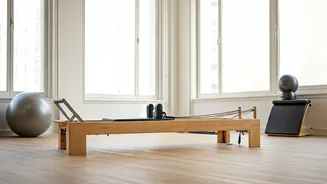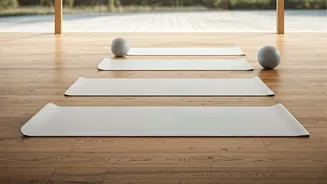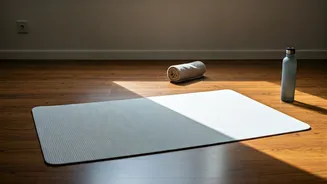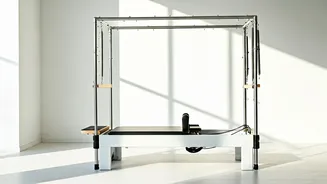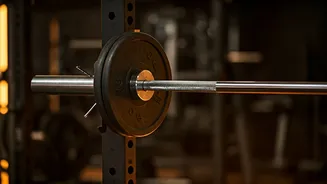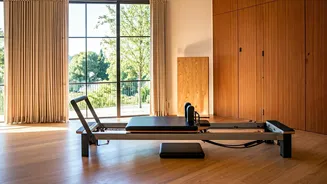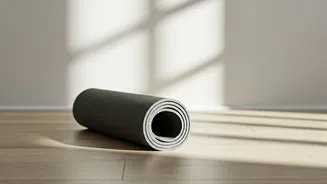Pilates: Core Power
Pilates is a fantastic way to boost your core strength and get better posture. It is a system of exercises that focuses on controlled movements and precise
techniques to work your body. Unlike some forms of exercise, Pilates is gentle on the joints, and it can be done by people of various fitness levels, making it a sustainable practice. The exercises are designed to engage your core muscles, which include your abdominals, lower back, and pelvic floor. The method uses your own body weight to challenge these muscles. As a result, you will gain a strong core, which is essential for almost every physical activity, and can also improve posture, balance, and flexibility. Regular Pilates practice can lead to improved body awareness and overall well-being. Furthermore, the movements are often adaptable, meaning you can adjust them to suit your needs and current fitness level. No special equipment is required; you can do these moves anywhere.
Toe Taps: Core Activation
Toe taps are one of the key Pilates exercises that begin with lying on your back with your knees bent and feet flat on the floor. Now engage your core by drawing your navel towards your spine, and lift one foot at a time, keeping the knee bent at a 90-degree angle. Gently tap your toes on the floor. Remember to keep your core engaged to stabilize your body and prevent any strain on your lower back. As you tap your toes to the floor, think of it as a controlled movement, where you’re not just touching the floor but maintaining a connection to your core. The controlled movement will help strengthen the core muscles that support your spine. This exercise helps in building the foundation for more advanced Pilates exercises by strengthening the core and improving control.
Rolling Like a Ball
This exercise is a fun way to improve core strength and spinal mobility. To start, sit on your mat with your knees bent, feet lifted slightly off the floor, and your hands holding the back of your thighs. Now, round your spine and roll backward, keeping your core engaged, and then roll back up to the starting position. It's essential to maintain control throughout the movement to protect your spine. As you roll back, avoid letting your head touch the floor and use your core to initiate the movement. The goal is to feel a gentle massage along your spine, improving flexibility and coordination. This exercise also helps to coordinate your breath with your movement, which is a core principle of Pilates. Rolling like a ball is a great way to warm up the body and prepare it for more challenging exercises.
Single-Leg Stretch
The single-leg stretch is a good exercise to work on core stability and coordination. To perform this, lie on your back with your knees bent towards your chest and your hands on your shins. Now, extend one leg forward, keeping it close to the floor, while pulling the other knee towards your chest. Switch legs, and repeat the movement. Your core is engaged throughout the entire exercise, preventing your lower back from arching. The key is to keep your core engaged and your movements controlled. This exercise helps to strengthen your abdominal muscles and improves your balance. Proper breathing is also important; inhale when changing legs and exhale as you pull your knee in.
Double Leg Stretch
The double leg stretch is a more advanced Pilates exercise that challenges your core even further. Start by lying on your back, knees bent, and your hands on your shins. Engage your core, and extend your arms overhead and legs outward, creating a long line with your body. Then, bring your arms and legs back towards your center, hugging your knees towards your chest. Focus on maintaining a stable core and controlled movement. This exercise deeply engages your abdominal muscles while also improving flexibility in your shoulders and hips. Controlled breathing is vital throughout the exercise, ensuring you get the most out of each movement. Remember to coordinate your breath with the movements to make them even more effective.


